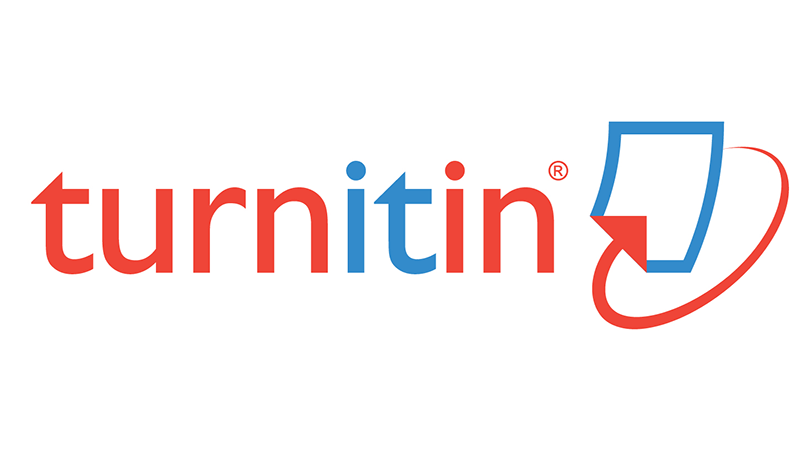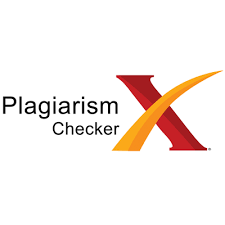Blended learning as an alternative learning method to support the digital education era
Abstract
Keywords
Full Text:
PDFReferences
Aboagye, E. (2020). Transitioning from Face-to-Face to Online Instruction in the COVID-19 Era: Challenges of Tutors at Colleges of Education in Ghana. Social Education Research, 2(1), 9–19. https://doi.org/10.37256/SER.212021545
Al-Fodeh, R. S., Alwahadni, A. M. S., Abu Alhaija, E. S., Bani-Hani, T., Ali, K., Daher, S. O., & Daher, H. O. (2021). Quality, Effectiveness and Outcome of Blended Learning in Dental Education during the COVID Pandemic: Prospects of a Post-Pandemic Implementation. Education Sciences 2021, 11(12), 810-827. https://doi.org/10.3390/EDUCSCI11120810
Alammary, A. S. (2024). Optimizing Components Selection in Blended Learning: Toward Sustainable Students Engagement and Success. Sustainability 2024, 16(12), 4923–4949. https://doi.org/10.3390/SU16124923
Ali, A. A., Alqarni, K., Migdadi, H. F., Aldosemani, T. I., & Alshraah, S. M. (2024). Addressing the Challenge of Hybrid Learning Environment in Foreign Language Education: Training Lecturers for Blended Teaching Approaches. Theory and Practice in Language Studies, 14(5), 1582–1594. https://doi.org/10.17507/TPLS.1405.32
Alqabbani, S., Almuwais, A., Benajiba, N., & Almoayad, F. (2020). Readiness towards emergency shifting to remote learning during COVID-19 pandemic among university instructors. E-Learning and Digital Media, 18(5), 460–479. https://doi.org/10.1177/2042753020981651
Arifani, Y.-, Suryanti, S., Wicaksono, B. H., Inayati, N., & Setiawan, S. (2020). EFL Teacher Blended Professional Training: A Review of Learners’ Online and Traditional Learning Interactions Quality. 3L: Language, Linguistics, Literature® The Southeast Asian Journal, 26(3), 124–138. https://doi.org/10.17576/3L-2020-2603-10
Azizah, Z., Ohyama, T., Zhao, X., Ohkawa, Y., & Mitsuishi, T. (2024). Predicting At-Risk Students in The Early Stage of a Blended Learning Course Via Machine Learning Using Limited Data. Computers and Education: Artificial Intelligence, 7, 100261. https://doi.org/10.1016/J.CAEAI.2024.100261
Blieck, Y., Zhu, C., Schildkamp, K., Struyven, K., Pynoo, B., Poortman, C. L., & Depryck, K. (2020). A Conceptual Model for Effective Quality Management of Online and Blended Learning. Electronic Journal of E-Learning, 18(2), 189‑204. https://doi.org/10.34190/EJEL.20.18.2.007
Boateng, S., & Marwanqana, S. (2024). Enhancing Educational Practices during a Pandemic: Examining Teachers’ Journey with Blended Learning in Rural High Schools. International Journal of Learning, Teaching and Educational Research, 23(4), 320–340. https://doi.org/10.26803/IJLTER.23.4.17
Chew, A. W. Z., Wang, Y., & Zhang, L. (2021). Correlating Dynamic Climate Conditions and Socioeconomic-Governmental Factors to Spatiotemporal Spread Of COVID-19 via Semantic Segmentation Deep Learning Analysis. Sustainable Cities and Society, 75, 103231. https://doi.org/10.1016/J.SCS.2021.103231
Chilton, J. K., Hanks, S., & Watson, H. R. (2024). A Blended Future? A Cross-Sectional Study Demonstrating The Impacts of The COVID-19 Pandemic on Student Experiences of Well-Being, Teaching and Learning. European Journal of Dental Education, 28(1), 170–183. https://doi.org/10.1111/EJE.12934
Deschacht, N., & Goeman, K. (2015). The Effect Of Blended Learning On Course Persistence And Performance Of Adult Learners: A Difference-In-Differences Analysis. Computers & Education, 87, 83–89. https://doi.org/10.1016/J.COMPEDU.2015.03.020
Fabian, K., Smith, S., & Taylor-Smith, E. (2024). Being in Two Places at the Same Time: a Future for Hybrid Learning Based on Student Preferences. TechTrends, 68(4), 693–704. https://doi.org/10.1007/S11528-024-00974-X/TABLES/4
Gellisch, M., Morosan-Puopolo, G., Brand-Saberi, B., & Schäfer, T. (2024). Adapting to New Challenges in Medical Education: A Three-Step Digitization Approach For Blended Learning. BMC Medical Education, 24(1), 1–15. https://doi.org/10.1186/S12909-024-05503-1/FIGURES/6
Horn, M., & Staker, H. (2017). The Blended Workbook Learning to Design The Schools of Our Future. Jossey-Bass publishesher.
Kariman, D., Harisman, Y., Sovia, A., & Prahmana, R. C. I. (2019). Effectiveness of Guided Discovery-Based Module: A Case Study in Padang City, Indonesia. Journal on Mathematics Education, 10(2), 239–250. https://doi.org/10.22342/JME.10.2.6610.239-250
Kilipiris, F., Avdimiotis, S., Christou, E., Tragouda, A., & Konstantinidis, I. (2024). Bloom’s Taxonomy Student Persona Responses to Blended Learning Methods Employing the Metaverse and Flipped Classroom Tools. Education Sciences 2024, 14(4), 418-437. https://doi.org/10.3390/EDUCSCI14040418
Kopzhassarova, U., & Izotova, A. (2024). The Potential for the Development and Implementation of Blended Learning at the Universities of Kazakhstan. World Journal of English Language, 14(4), 328-335. https://doi.org/10.5430/WJEL.V14N4P328
Panigrahi, R., Nihar, K. L., & Singh, N. (2024). Quality Measurement of Blended Learning Model in Higher Education: Scale Development and Validation. Higher Learning Research Communications, 14(1), 86–102. https://doi.org/10.18870/hlrc.v14i1.1467
Rahmi, U., Fajri, B. R., & Azrul, A. (2024). Effectiveness of Interactive Content with H5P for Moodle-Learning Management System in Blended Learning. Journal of Learning for Development , 11(1), 66–81. https://doi.org/10.56059/JL4D.V11I1.1135
Sawan, N., Al-Hajaya, K., Salem, R. I. A., & Alshhadat, M. (2024). Pre-COVID-19 Student Perceptions on Blended Learning and Flipped Classroom in Accountancy: A Case Study From Two Emerging UK HEIs. Journal of Applied Research in Higher Education, 16(2), 597–609. https://doi.org/10.1108/JARHE-01-2023-0002/FULL/XML
Seo, Y.-J., Um, K.-H., Seo, Y.-J., & Um, K.-H. (2023). The Role of Service Quality in Fostering Different Types of Perceived Value for Student Blended Learning Satisfaction. Journal of Computing in Higher Education, 35, 521–549. https://doi.org/10.1007/s12528-022-09336-z
Shah, S., Mahboob, U., Junaid, S. M., Siddiqui, S., Jamil, B., & Rehman, S. (2024). Challenges Faced by Teachers of Postgraduate Health Professions Blended Learning Programs: A Qualitative Analysis. BMC Medical Education, 24(1), 1–12. https://doi.org/10.1186/S12909-024-05213-8/FIGURES/1
Sulfemi, W. B. (2023). Student Team Achievement Division Model Assisted by Card Media in Social Studies Learning. Jurnal Teori Dan Praksis Pembelajaran IPS, 8(2), 49–63. https://doi.org/10.17977/um022v8i22023p49
Suson, R. (2024). Factors Influencing Student Satisfaction in Blended Learning: A Structural Equation Modelling Approach. International Journal of Learning, Teaching and Educational Research, 23(7), 207–227. https://doi.org/10.26803/IJLTER.23.7.11
Sutherland, K., Brock, G., de Villiers Scheepers, M. J., Millear, P. M., Norman, S., Strohfeldt, T., Downer, T., Masters, N., & Black, A. L. (2024). Non-Traditional Students’ Preferences for Learning Technologies and Impacts on Academic Self-Efficacy. Journal of Computing in Higher Education, 36(2), 298–319. https://doi.org/10.1007/S12528-023-09354-5/TABLES/5
Tran, H. H., Nguyen, T. H., Pham, T. B. D., Bich, L. P. T., & Le Van, D. N. (2024). Developing Blended Learning Frameworks for High Schools: A Case Study in Nam Dinh Province, Vietnam. Journal of Curriculum and Teaching, 13(2), 146-158. https://doi.org/10.5430/JCT.V13N2P146
Tricahyono, D. (2021). Pendekatan Heutagogi: Sebuah alternatif dalam pembelajaran IPS pada masa pandemi Covid-19. Jurnal Teori Dan Praksis Pembelajaran IPS, 6(2), 92–102. https://doi.org/10.17977/um022v6i22021p92
van der Merwe, L. J., van Zyl, S., & Joubert, G. (2024). “But This Is the New Reality, and I Will Adapt”: Understanding Lecturers’ Experiences of COVID-19 Lockdown Online Learning and Teaching. Medical Science Educator, 34(1), 89–102. https://doi.org/10.1007/S40670-023-01925-6/TABLES/3
Versteijlen, M., & Wals, A. E. J. (2023). Developing Design Principles for Sustainability-Oriented Blended Learning in Higher Education. Sustainability (Switzerland), 15(10), 8150-8174. https://doi.org/10.3390/SU15108150
Yeung, J. W. K. (2024). The Dynamic Relationships between Educational Expectations and Science Learning Performance among Students in Secondary School and Their Later Completion of a STEM Degree. Behavioral Sciences, 14(6), 506-530. https://doi.org/10.3390/BS14060506
Yu, X., Gan, W., Lyu, X., & Alammary, A. S. (2024). Blended Learning Delivery Methods for a Sustainable Learning Environment: A Delphi Study. Sustainability 16(8), 3269-3285. https://doi.org/10.3390/SU16083269
DOI: http://dx.doi.org/10.17977/um022v9i22024p92
Refbacks
- There are currently no refbacks.
Editorial and Administration Office:
This Journal is published by Prodi Pendidikan IPS, Fakultas Ilmu Sosial, Universitas Negeri Malang
Semarang St. No. 5 Building I3-102 65145.
Phone. (0341) 551312. line. 376 (19)
Homepage: http://journal2.um.ac.id/index.php/jtppips/index
email: jtp2ips.journal@um.ac.id
JTP2IPS INDEXED BY:
e-ISSN 2503-5347
ISSN 2503-1201
JTP2IPS is licensed by CC BY 4.0.

2.png)








